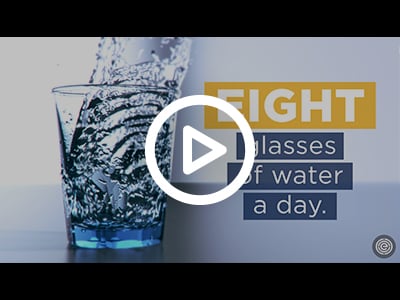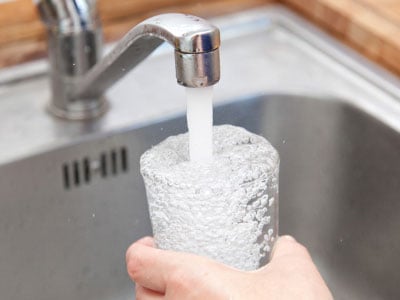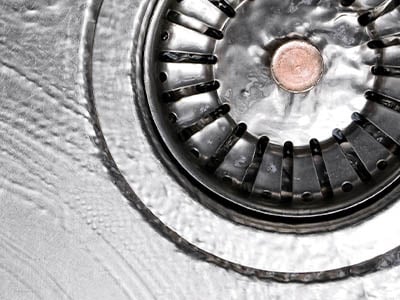Derry Water Department
EWG's drinking water quality report shows results of tests conducted by the water utility and provided to the Environmental Working Group by the New Hampshire Department of Environmental Services, as well as information from the U.S. EPA Enforcement and Compliance History database (ECHO). For the latest quarter assessed by the U.S. EPA (January 2021 - March 2021), tap water provided by this water utility was in compliance with federal health-based drinking water standards.
Utility Details
- Derry, New Hampshire
- Serves: 15,145
- Data available: 2014-2020*
- Source: Purchased surface water
* 2020/2021 testing is for chemicals in EPA's Fourth Unregulated Contaminant Monitoring Rule (UCMR-4) only.
Contaminants Detected
11
EXCEED
EWG HEALTH
GUIDELINES
26 Total Contaminants
- Legal does not necessarily equal safe. Getting a passing grade from the federal government does not mean the water meets the latest health guidelines.
- Legal limits for contaminants in tap water have not been updated in almost 20 years.
- The best way to ensure clean tap water is to keep pollution out of source water in the first place.
Looking for a countertop water filter?
Find out which filters earned EWG's recommendation
See the guideContaminants Detected
Bromodichloromethane
Potential Effect: cancer23x EWG'S HEALTH GUIDELINEBromodichloromethane
more aboutthis contaminant
Bromodichloromethane, one of the total trihalomethanes (TTHMs), is formed when chlorine or other disinfectants are used to treat drinking water. Bromodichloromethane and other disinfection byproducts increase the risk of cancer and may cause problems during pregnancy. Click here to read more about disinfection byproducts.
Bromodichloromethane was found at 23 times above EWG's Health Guideline.
EWG Health Guideline
This Utility
National Average
State Average
ppb = parts per billion
Health Risks
The EWG Health Guideline of 0.06 ppb for bromodichloromethane was proposed in 2018 by the California Office of Environmental Health Hazard Assessment as a one-in-a-million lifetime risk of cancer. Values greater than one-in-a-million cancer risk level can result in increased cancer cases above one in a million people.
Pollution Sources
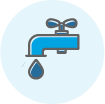
Treatment Byproducts
Filtering Options
Activated Carbon
Reverse Osmosis
Chloroform
Potential Effect: cancer6.7x EWG'S HEALTH GUIDELINEChloroform
more aboutthis contaminant
Chloroform, one of the total trihalomethanes (TTHMs), is formed when chlorine or other disinfectants are used to treat drinking water. Chloroform and other disinfection byproducts increase the risk of cancer and may cause problems during pregnancy.
Chloroform was found at 6.7 times above EWG's Health Guideline.
EWG Health Guideline
This Utility
National Average
State Average
ppb = parts per billion
Health Risks
The EWG Health Guideline of 0.4 ppb for chloroform was proposed in 2018 by the California Office of Environmental Health Hazard Assessment as a one-in-a-million lifetime risk of cancer. Values greater than one-in-a-million cancer risk level can result in increased cancer cases above one in a million people.
Pollution Sources

Treatment Byproducts
Filtering Options
Activated Carbon
Reverse Osmosis
Chromium (hexavalent)
Potential Effect: cancer2.3x EWG'S HEALTH GUIDELINEChromium (hexavalent)
more aboutthis contaminant
Chromium (hexavalent) is a carcinogen that commonly contaminates American drinking water. Chromium (hexavalent) in drinking water may be due to industrial pollution or natural occurrences in mineral deposits and groundwater. Read more about chromium (hexavalent).
Chromium (hexavalent) was found at 2.3 times above EWG's Health Guideline.
EWG Health Guideline
This Utility
National Average
State Average
ppb = parts per billion
Health Risks
The EWG Health Guideline of 0.02 ppb for chromium (hexavalent) was defined by the California Office of Environmental Health Hazard Assessment as a public health goal, the level of a drinking water contaminant that does not pose a significant health risk. This health guideline protects against cancer.
Pollution Sources

Industry

Naturally Occurring
Filtering Options
Reverse Osmosis
Ion Exchange
Dibromochloromethane
Potential Effect: cancer6.8x EWG'S HEALTH GUIDELINEDibromochloromethane
more aboutthis contaminant
Dibromochloromethane, one of the total trihalomethanes (TTHMs), is formed when chlorine or other disinfectants are used to treat drinking water. Dibromochloromethane and other disinfection byproducts increase the risk of cancer and may cause problems during pregnancy. Click here to read more about disinfection byproducts.
Dibromochloromethane was found at 6.8 times above EWG's Health Guideline.
EWG Health Guideline
This Utility
National Average
State Average
ppb = parts per billion
Health Risks
The EWG Health Guideline of 0.1 ppb for dibromochloromethane was proposed in 2018 by the California Office of Environmental Health Hazard Assessment as a one-in-a-million lifetime risk of cancer. Values greater than one-in-a-million cancer risk level can result in increased cancer cases above one in a million people.
Pollution Sources

Treatment Byproducts
Filtering Options
Activated Carbon
Reverse Osmosis
Dichloroacetic acid
Potential Effect: cancer15x EWG'S HEALTH GUIDELINEDichloroacetic acid
more aboutthis contaminant
Dichloroacetic acid, one of the group of five haloacetic acids regulated by federal standards, is formed when chlorine or other disinfectants are used to treat drinking water. Haloacetic acids and other disinfection byproducts increase the risk of cancer and may cause problems during pregnancy. Click here to read more about disinfection byproducts.
Dichloroacetic acid was found at 15 times above EWG's Health Guideline.
EWG Health Guideline
This Utility
National Average
State Average
ppb = parts per billion
Health Risks
The EWG Health Guideline of 0.2 ppb for dichloroacetic acid was proposed in 2020 by the California Office of Environmental Health Hazard Assessment as a public health goal, the level of a drinking water contaminant that does not pose a significant health risk.a one-in-a-million lifetime risk of cancer. Values greater than one-in-a-million cancer risk level can result in increased cancer cases above one in a million people.
Pollution Sources

Treatment Byproducts
Filtering Options
Activated Carbon
Reverse Osmosis
Haloacetic acids (HAA5)†
Potential Effect: cancer44x EWG'S HEALTH GUIDELINEHaloacetic acids (HAA5)
more aboutthis contaminant
Haloacetic acids are formed when disinfectants such as chlorine are added to tap water. The group of five haloacetic acids regulated by federal standards includes monochloroacetic acid, dichloroacetic acid, trichloroacetic acid, monobromoacetic acid and dibromoacetic acid.
Haloacetic acids (HAA5) was found at 44 times above EWG's Health Guideline.
EWG Health Guideline
This Utility
Legal Limit
National Average
State Average
ppb = parts per billion
Health Risks
The EWG Health Guideline of 0.1 ppb for the group of five haloacetic acids, or HAA5, was defined in a peer-reviewed scientific study by EWG and represents a one-in-a-million lifetime cancer risk level. This health guideline protects against cancer.
Pollution Sources

Treatment Byproducts
Filtering Options
Activated Carbon
Reverse Osmosis
Haloacetic acids (HAA9)†
Potential Effect: cancer51x EWG'S HEALTH GUIDELINEHaloacetic acids (HAA9)
more aboutthis contaminant
Haloacetic acids are formed when disinfectants such as chlorine are added to tap water. The group of nine haloacetic acids includes monochloroacetic acid, dichloroacetic acid, trichloroacetic acid, monobromoacetic acid and dibromoacetic acid, which are regulated as a group by the federal government (HAA5); and bromochloroacetic acid, bromodichloroacetic acid, chlorodibromoacetic acid, and tribromoacetic acid.
Haloacetic acids (HAA9) was found at 51 times above EWG's Health Guideline.
EWG Health Guideline
This Utility
National Average
State Average
ppb = parts per billion
Health Risks
The EWG Health Guideline of 0.06 ppb for the group of nine haloacetic acids, or HAA9, was defined in a peer-reviewed scientific study by EWG and represents a one-in-a-million lifetime cancer risk level as . This health guideline protects against cancer.
Pollution Sources

Treatment Byproducts
Filtering Options
Activated Carbon
Reverse Osmosis
Perfluorooctanoic acid (PFOA)*
Potential Effect: cancer249x EWG'S HEALTH GUIDELINEPerfluorooctanoic acid (PFOA)
more aboutthis contaminant
Perfluorooctanoic acid (PFOA) is a member of a group of perfluorinated chemicals used in many consumer products. PFOA and other perfluorinated chemicals can cause serious health effects, including cancer, endocrine disruption, accelerated puberty, liver and immune system damage, and thyroid changes. These chemicals are persistent in the environment and they accumulate in people. Click here to read more about perfluorinated chemicals.
Perfluorooctanoic acid (PFOA) was found at 249 times above EWG's Health Guideline.
EWG Health Guideline
This Utility
Legal Limit
National Average
State Average
ppt = parts per trillion
Health Risks
The EWG Health Guideline of 0.007 ppt for PFOA was proposed by California Office of Environmental Health Hazard Assessment as a public health goal, the level of a drinking water contaminant that does not pose a significant health risk. This health guideline protects against cancer.Pollution Sources

Industry

Runoff & Sprawl
Filtering Options
Activated Carbon
Reverse Osmosis
Radium, combined (-226 & -228)*
Potential Effect: cancer18x EWG'S HEALTH GUIDELINERadium, combined (-226 & -228)
more aboutthis contaminant
Radium is a radioactive element that causes bone cancer and other cancers. It can occur naturally in groundwater, and oil and gas extraction activities such as hydraulic fracturing can elevate concentrations.
Radium, combined (-226 & -228) was found at 18 times above EWG's Health Guideline.
EWG Health Guideline
This Utility
Legal Limit
National Average
State Average
pCi/L = picocuries per liter
Health Risks
EWG applied the health guideline of 0.05 pCi/L, defined by the California Office of Environmental Health Hazard Assessment as a public health goal for radium-226, to radium-226 and radium-228 combined. This health guideline protects against cancer.Pollution Sources

Industry

Naturally Occurring
Filtering Options
Reverse Osmosis
Ion Exchange
Total trihalomethanes (TTHMs)†
Potential Effect: cancer32x EWG'S HEALTH GUIDELINETotal trihalomethanes (TTHMs)
more aboutthis contaminant
Trihalomethanes are cancer-causing contaminants that form during water treatment with chlorine and other disinfectants. The total trihalomethanes group includes four chemicals: chloroform, bromodichloromethane, dibromochloromethane and bromoform.
Total trihalomethanes (TTHMs) was found at 32 times above EWG's Health Guideline.
EWG Health Guideline
This Utility
Legal Limit
National Average
State Average
ppb = parts per billion
Health Risks
The health guideline of 0.15 parts per billion, or ppb, for the group of four trihalomethanes, or THM4/TTHM, was defined in a peer-reviewed scientific study by EWG and represents a one-in-one-million lifetime cancer risk level.Pollution Sources

Treatment Byproducts
Filtering Options
Activated Carbon
Reverse Osmosis
Trichloroacetic acid
Potential Effect: cancer4.7x EWG'S HEALTH GUIDELINETrichloroacetic acid
more aboutthis contaminant
Trichloroacetic acid, one of the group of five haloacetic acids regulated by federal standards, is formed when chlorine or other disinfectants are used to treat drinking water. Haloacetic acids and other disinfection byproducts increase the risk of cancer and may cause problems during pregnancy. Click here to read more about disinfection byproducts.
Trichloroacetic acid was found at 4.7 times above EWG's Health Guideline.
EWG Health Guideline
This Utility
National Average
State Average
ppb = parts per billion
Health Risks
The EWG Health Guideline of 0.1 ppb for trichloroacetic acid was proposed in 2020 by the California Office of Environmental Health Hazard Assessment as a public health goal, the level of a drinking water contaminant that does not pose a significant health risk.a one-in-a-million lifetime risk of cancer. Values greater than one-in-a-million cancer risk level can result in increased cancer cases above one in a million people.
Pollution Sources

Treatment Byproducts
Filtering Options
Activated Carbon
Reverse Osmosis
Includes chemicals detected in 2017-2019 for which annual utility averages exceeded an EWG-selected health guideline established by a federal or state public health authority; chemicals detected under the EPA's Unregulated Contaminant Monitoring Rule (UCMR 3) program in 2013 to 2015 (and subsequent testing when available), for which annual utility averages exceeded a health guideline established by a federal or state public health authority; chemicals detected under the EPA's Unregulated Contaminant Monitoring Rule (UCMR 4) program in 2017 to 2020 (and subsequent testing when available), for which annual utility averages exceeded a health guideline established by a federal or state public health authority; radiological contaminants detected between 2014 and 2019.
*This water utility buys or otherwise receives some or all of its finished water from Manchester Water Works. Tap water results marked with an * are from the supplying utility.
† HAA5 is a contaminant group that includes monochloroacetic acid, dichloroacetic acid, trichloroacetic acid, monobromoacetic acid and dibromoacetic acid. HAA9 is a contaminant group that includes the chemicals in HAA5 and bromochloroacetic acid, bromodichloroacetic acid, chlorodibromoacetic acid and tribromoacetic acid. TTHM is a contaminant group that includes bromodichloromethane, bromoform, chloroform and dibromochloromethane.
1,4-Dioxane
more aboutthis contaminant
1,4-Dioxane is a solvent classified by the EPA as a likely human carcinogen. It contaminates groundwater in many states due to industrial wastewater discharges, plastic manufacturing runoff and landfill runoff.
How your levels compare
EWG Health Guideline
This Utility
National Average
State Average
ppb = parts per billion
Health Risks
The EWG Health Guideline of 0.35 ppb for 1,4-dioxane was defined by the Environmental Protection Agency as a one-in-a-million lifetime risk of cancer. Values greater than one-in-a-million cancer risk level can result in increased cancer cases above one in a million people.
Pollution Sources

Industry

Runoff & Sprawl
Filtering Options
Reverse Osmosis
Aluminum
more aboutthis contaminant
Aluminum is a metal released from metal refineries and mining operations. Too much aluminum exposure can impair children's brain development.
How your levels compare
EWG Health Guideline
This Utility
National Average
State Average
ppb = parts per billion
Health Risks
The EWG Health Guideline of 600 ppb for aluminum was defined by the California Office of Environmental Health Hazard Assessment as a public health goal, the level of a drinking water contaminant that does not pose a significant health risk. This health guideline protects against harm to the brain and nervous system.
Pollution Sources

Industry

Naturally Occurring
Filtering Options
Reverse Osmosis
Barium is a mineral present in rocks, soil and water. High concentrations of barium in drinking water increase the risk of cardiovascular disease and hypertension.
How your levels compare
EWG Health Guideline
This Utility
Legal Limit
National Average
State Average
ppb = parts per billion
Health Risks
The EWG Health Guideline of 700 ppb for barium was defined by EWG as benchmark that protects against harm to the kidneys and the cardiovascular system.
Pollution Sources

Industry

Naturally Occurring
Filtering Options
Reverse Osmosis
Ion Exchange
Bromoform
more aboutthis contaminant
Bromoform, one of the total trihalomethanes (TTHMs), is formed when chlorine or other disinfectants are used to treat drinking water. Bromoform and other disinfection byproducts increase the risk of cancer and may cause problems during pregnancy. Click here to read more about disinfection byproducts.
How your levels compare
EWG Health Guideline
This Utility
National Average
State Average
ppb = parts per billion
Health Risks
The EWG Health Guideline of 0.5 ppb for bromoform was proposed in 2018 by the California Office of Environmental Health Hazard Assessment as a one-in-a-million lifetime risk of cancer. Values greater than one-in-a-million cancer risk level can result in increased cancer cases above one in a million people.
Pollution Sources

Treatment Byproducts
Filtering Options
Activated Carbon
Reverse Osmosis
Chlorate
more aboutthis contaminant
Chlorate forms in drinking water as a byproduct of disinfection. Chlorate impairs thyroid function, making chlorate exposure most harmful during pregnancy and childhood.
How your levels compare
EWG Health Guideline
This Utility
National Average
State Average
ppb = parts per billion
Health Risks
The EWG Health Guideline of 210 ppb for chlorate was defined by the Environmental Protection Agency as a benchmark for testing under the Unregulated Contaminant Monitoring Rule program. This health guideline protects against hormone disruption.
Pollution Sources

Agriculture

Industry

Treatment Byproducts
Chromium (total)
more aboutthis contaminant
Chromium is a naturally occurring metal, but industrial uses can elevate its levels in water. One form, hexavalent chromium, causes cancer. Total chromium is not a good indicator of the amount of hexavalent chromium in drinking water.
How your levels compare
This Utility
Legal Limit
National Average
State Average
ppb = parts per billion
Pollution Sources

Industry

Naturally Occurring
Filtering Options
Reverse Osmosis
Ion Exchange
Dibromoacetic acid
more aboutthis contaminant
Dibromoacetic acid, one of the group of five haloacetic acids regulated by federal standards, is formed when chlorine or other disinfectants are used to treat drinking water. Haloacetic acids and other disinfection byproducts increase the risk of cancer and may cause problems during pregnancy. Click here to read more about disinfection byproducts.
How your levels compare
EWG Health Guideline
This Utility
National Average
State Average
ppb = parts per billion
Health Risks
The EWG Health Guideline of 0.04 ppb for dibromoacetic acid was defined in a peer-reviewed scientific study by EWG and represents a on-in-a-million lifetime cancer risk level. This health guideline protects against cancer.
Pollution Sources

Treatment Byproducts
Filtering Options
Activated Carbon
Reverse Osmosis
Fluoride
more aboutthis contaminant
Fluoride occurs naturally in surface and groundwater and is also added to drinking water by many water systems.
How your levels compare
This Utility
Legal Limit
National Average
State Average
ppm = parts per million
Pollution Sources

Treatment Byproducts
Filtering Options
Reverse Osmosis
Manganese
more aboutthis contaminant
Manganese is a naturally occurring element that is common in food and drinking water. Excessive manganese exposures may impair children's attention, memory and intellectual capacity. Click here to read more about manganese.
How your levels compare
EWG Health Guideline
This Utility
National Average
State Average
ppb = parts per billion
Health Risks
The EWG Health Guideline of 100 ppb for manganese was defined by the state of Minnesota as a health risk limit, the concentration of a contaminant that can be consumed with little or no risk to health. This health guideline protects against harm to the brain and nervous system.
Pollution Sources

Industry

Naturally Occurring
Filtering Options
Ion Exchange
Monochloroacetic acid
more aboutthis contaminant
Monochloroacetic acid, one of the group of five haloacetic acids regulated by federal standards, is formed when chlorine or other disinfectants are used to treat drinking water. Haloacetic acids and other disinfection byproducts increase the risk of cancer and may cause problems during pregnancy. Click here to read more about disinfection byproducts.
How your levels compare
EWG Health Guideline
This Utility
National Average
State Average
ppb = parts per billion
Health Risks
The EWG Health Guideline of 53 ppb for monochloroacetic acid was proposed in 2020 by the California Office of Environmental Health Hazard Assessment as a public health goal, the level of a drinking water contaminant that does not pose a significant health risk.. This health guideline protects against system toxicity.
Pollution Sources

Treatment Byproducts
Filtering Options
Activated Carbon
Reverse Osmosis
Nitrate
more aboutthis contaminant
Nitrate, a fertilizer chemical, frequently contaminates drinking water due to agricultural and urban runoff, and discharges from municipal wastewater treatment plants and septic tanks. Excessive nitrate in water can cause oxygen deprivation in infants and increase the risk of cancer. Click here to read more about nitrate.
How your levels compare
EWG Health Guideline
This Utility
Legal Limit
National Average
State Average
ppm = parts per million
Health Risks
The EWG Health Guideline of 0.14 ppm for nitrate was defined by EWG . This health guideline protects against cancer and harm to fetal growth and development.
Pollution Sources

Agriculture

Runoff & Sprawl

Naturally Occurring
Filtering Options
Reverse Osmosis
Ion Exchange
Perfluorobutanoic Acid (PFBA)
more aboutthis contaminant
Perfluorobutanoic acid (PFBA) is a member of a group of perfluorinated chemicals used in many consumer products. PFOS and other perfluorinated chemicals can cause serious health effects, including cancer, endocrine disruption, accelerated puberty, liver and immune system damage, and thyroid changes. These chemicals are persistent in the environment and they accumulate in people. Click here to read more about perfluorinated chemicals.
How your levels compare
This Utility
National Average
State Average
ppt = parts per trillion
Pollution Sources

Industry

Runoff & Sprawl
Filtering Options
Activated Carbon
Reverse Osmosis
Perfluorohexanoic Acid (PFHxA)
more aboutthis contaminant
Perfluorohexanoic acid is a member of a group of perfluorinated chemicals used in many consumer products. Perfluorinated chemicals can cause serious health effects, including cancer, endocrine disruption, accelerated puberty, liver and immune system damage, and thyroid changes. These chemicals are persistent in the environment and they accumulate in people. Click here to read more about perfluorinated chemicals.
How your levels compare
This Utility
National Average
State Average
ppt = parts per trillion
Pollution Sources

Industry

Runoff & Sprawl
Filtering Options
Activated Carbon
Reverse Osmosis
Strontium
more aboutthis contaminant
Strontium is a metal that accumulates in the bones. Radioactive strontium-90 can cause bone cancer and leukemia, and any form of strontium at high doses can harm bone health.
How your levels compare
EWG Health Guideline
This Utility
National Average
State Average
ppb = parts per billion
Health Risks
The EWG Health Guideline of 1,500 ppb for strontium was defined by the Environmental Protection Agency as a benchmark for testing under the Unregulated Contaminant Monitoring Rule program. This health guideline protects against harm to bones.
Pollution Sources

Industry

Naturally Occurring
Filtering Options
Reverse Osmosis
Ion Exchange
Vanadium
more aboutthis contaminant
Vanadium is a metal used in steels and other alloys. People are commonly exposed to vanadium in water and food. Excessive exposure can be toxic during pregnancy and childhood.
How your levels compare
EWG Health Guideline
This Utility
National Average
State Average
ppb = parts per billion
Health Risks
The EWG Health Guideline of 21 ppb for vanadium was defined by the Environmental Protection Agency as a benchmark for testing under the Unregulated Contaminant Monitoring Rule program. This health guideline protects against change in blood chemistry.
Pollution Sources

Industry

Naturally Occurring
Filtering Options
Ion Exchange
Includes chemicals detected in 2017-2019 for which annual utility averages were lower than an EWG-selected health guideline established by a federal or state public health authority; chemicals detected under the EPA's Unregulated Contaminant Monitoring Rule (UCMR 3) program in 2013 to 2015 (and subsequent testing when available), for which annual utility averages were lower than an EWG-selected health guideline established by a federal or state public health authority.
Other Contaminants Tested
✕Derry Water Department compliance with legally mandated federal standards:
- From April 2019 to March 2021, Derry Water Department complied with health-based drinking water standards.
Information in this section on Derry Water Department comes from the U.S. EPA Enforcement and Compliance History Online database (ECHO).
LEARN MORE ABOUT THIS UTILITYWater Filters That Can Reduce Contaminant Levels
| Contaminant | Activated Carbon | Reverse Osmosis | Ion Exchange |
| CONTAMINANTS ABOVE HEALTH GUIDELINES | |||
| Bromodichloromethane | ✔ | ✔ | |
| Chloroform | ✔ | ✔ | |
| Chromium (hexavalent) | ✔ | ✔ | |
| Dibromochloromethane | ✔ | ✔ | |
| Dichloroacetic acid | ✔ | ✔ | |
| Haloacetic acids (HAA5) | ✔ | ✔ | |
| Haloacetic acids (HAA9) | ✔ | ✔ | |
| Perfluorooctanoic acid (PFOA) | ✔ | ✔ | |
| Radium, combined (-226 & -228) | ✔ | ✔ | |
| Total trihalomethanes (TTHMs) | ✔ | ✔ | |
| Trichloroacetic acid | ✔ | ✔ | |
| OTHER CONTAMINANTS DETECTED | |||
| 1,4-Dioxane | ✔ | ||
| Aluminum | ✔ | ||
| Barium | ✔ | ✔ | |
| Bromoform | ✔ | ✔ | |
| Chlorate | |||
| Chromium (total) | ✔ | ✔ | |
| Dibromoacetic acid | ✔ | ✔ | |
| Fluoride | ✔ | ||
| Manganese | ✔ | ||
| Monochloroacetic acid | ✔ | ✔ | |
| Nitrate | ✔ | ✔ | |
| Perfluorobutanoic acid (PFBA) | ✔ | ✔ | |
| Perfluorohexanoic Acid (PFHxA) | ✔ | ✔ | |
| Strontium | ✔ | ✔ | |
| Vanadium | ✔ | ||
Take Action
Contact Your Local Official
One of the best ways to push for cleaner water is to hold accountable the elected officials who have a say in water quality – from city hall and the state legislature to Congress all the way to the Oval Office – by asking questions and demanding answers.
LEARN MOREFilter Out Contaminants
Check out our recommendations for filters to protect your water against the detected contaminants.
EWG’S WATER FILTER GUIDE